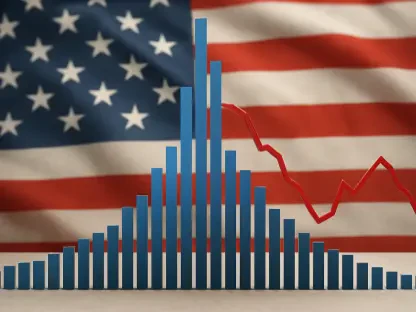In a bold move that has sent ripples through the pharmaceutical industry, President Donald Trump recently announced a drastic policy aimed at reshaping drug manufacturing in the United States. Via a statement on Truth Social, the administration revealed plans to impose a staggering 100% tariff on branded and patented pharmaceutical drugs unless manufacturers demonstrate active progress in building production facilities on American soil. This policy, effective from the start of October, defines “building” as having broken ground or being under construction, offering an exemption to companies meeting these criteria. While the announcement lacks formal documentation, it has ignited intense debate among healthcare providers, industry leaders, and policymakers. The core intent appears to be a push for lower drug prices and enhanced domestic production, but the potential consequences have raised alarms about supply chain stability and patient access to critical medications. This development underscores a broader tension between economic nationalism and the complex realities of global healthcare supply chains, setting the stage for a contentious policy battle.
Industry Under Pressure
The pharmaceutical sector finds itself at a crossroads following the recent tariff announcement, with significant implications for how drugs are produced and priced in the United States. The policy targets imported branded medications, aiming to incentivize companies to relocate manufacturing domestically as a means to reduce costs for American consumers. This move builds on prior efforts by the administration to address high drug prices, including direct appeals to major drugmakers to align U.S. pricing with lower international rates. However, the absence of official guidelines on the tariff’s implementation has left many in the industry scrambling to interpret the scope and timeline of compliance. The threat of such a steep penalty has already prompted some companies to reassess their operational strategies, with the potential for sweeping changes in how they approach the American market. Beyond the immediate financial burden, there’s a growing concern that this policy could disrupt the delicate balance of supply and demand, especially for specialized medications that rely on intricate global production networks.
Moreover, the pressure to establish U.S.-based plants introduces logistical and financial challenges that could reshape corporate priorities in the long term. For many drugmakers, constructing new facilities is a multi-year endeavor involving substantial investment, regulatory approvals, and workforce development. While some industry giants have the capital to adapt, smaller firms may struggle to meet the criteria for tariff exemptions, potentially limiting their ability to compete. This disparity could lead to market consolidation, where only the largest players thrive under the new rules. Additionally, the focus on domestic production raises questions about the readiness of American infrastructure to support a sudden influx of manufacturing demands. From securing raw materials to ensuring compliance with stringent safety standards, the hurdles are numerous. Stakeholders worry that without careful planning, the policy might inadvertently exacerbate the very issues it seeks to solve, such as high costs and limited access to essential drugs for vulnerable populations.
Stakeholder Reactions and Concerns
Responses to the tariff proposal have been varied, with healthcare organizations and industry representatives voicing significant apprehension about its potential fallout. The American Hospital Association has taken a firm stance, urging exemptions for essential drugs used in treating life-threatening conditions like cancer and heart disease. Hospitals depend on a complex, often international supply chain to ensure a steady flow of medications, and any disruption—however temporary—could have dire consequences for patient care. The association has emphasized that while the goal of affordable drugs is shared, punitive measures like tariffs risk creating shortages that endanger lives. This perspective highlights a critical tension: the need to balance economic objectives with the immediate health needs of the population. As discussions unfold, hospitals are advocating for tailored policies that protect access to critical treatments while addressing systemic pricing issues through alternative means.
Meanwhile, the Pharmaceutical Research and Manufacturers of America, a leading industry group, has pushed back against the narrative that tariffs are a silver bullet for lowering drug costs. Senior voices within the organization argue that a significant portion of innovative medicines are already produced domestically, with members investing billions annually in U.S. manufacturing capabilities. They caution that imposing such high tariffs could divert funds away from research and development, ultimately stunting medical innovation and raising costs for consumers. The risk of shortages also looms large, as redirecting production to new facilities takes time and resources that may not align with immediate market needs. Some companies, however, have taken proactive steps by announcing plans for new American plants, aiming to mitigate tariff risks while demonstrating commitment to domestic growth. This split in approach reflects the broader uncertainty within the industry about how to navigate the administration’s aggressive push for change without compromising patient outcomes.
Balancing Economic Goals with Healthcare Needs
The underlying goal of the tariff policy is to foster economic nationalism by prioritizing U.S.-based drug production, but achieving this without harming healthcare delivery remains a daunting challenge. Proponents argue that incentivizing local manufacturing could strengthen supply chain resilience, especially in light of past vulnerabilities exposed by global disruptions. A domestic focus might also create jobs and reduce reliance on foreign suppliers for critical medications, aligning with broader national security interests. Yet, the feasibility of this shift is under scrutiny, as the pharmaceutical industry operates within a web of international dependencies for raw materials, expertise, and distribution. Without a comprehensive strategy to support this transition—such as incentives for infrastructure development or streamlined regulatory processes—the policy risks being seen as more punitive than constructive. The lack of clarity in the announcement only amplifies these concerns, leaving room for missteps in execution.
Beyond the logistical hurdles, the financial implications of a 100% tariff could ripple through the healthcare ecosystem in unexpected ways. If drugmakers pass on the added costs to consumers or insurers, the burden may ultimately fall on patients already grappling with high out-of-pocket expenses. Alternatively, reduced investment in innovation could slow the development of breakthrough therapies, affecting long-term health outcomes. Some industry players have responded by enhancing patient assistance programs to offset costs, but these measures address only part of the problem. The broader issue of systemic gaps in health insurance and drug pricing remains unresolved, with tariffs potentially exacerbating rather than alleviating these challenges. As policymakers weigh the merits of this approach, the need for dialogue with all stakeholders—hospitals, manufacturers, and patient advocates—becomes paramount to ensure that economic goals do not come at the expense of accessible, high-quality care.
Reflecting on Policy Impacts
Looking back, the announcement of a 100% tariff on imported branded drugs marked a pivotal moment in the ongoing struggle to reform pharmaceutical pricing and production. It sparked intense discussions among industry leaders, healthcare providers, and policymakers, each grappling with the ramifications of such a sweeping measure. Hospitals raised alarms over potential supply disruptions, while drugmakers cautioned against the unintended financial strain on innovation. The absence of detailed implementation plans only deepened the uncertainty, leaving many to question how the balance between domestic manufacturing and patient access was achieved in practice. Moving forward, a collaborative approach could have offered a path to refine the policy—perhaps through targeted incentives or phased timelines for compliance. Engaging diverse perspectives might have ensured that the drive for lower costs and U.S.-based production did not overshadow the urgent need for a stable, reliable drug supply. Future considerations should focus on crafting solutions that address both economic aspirations and the fundamental right to healthcare.









